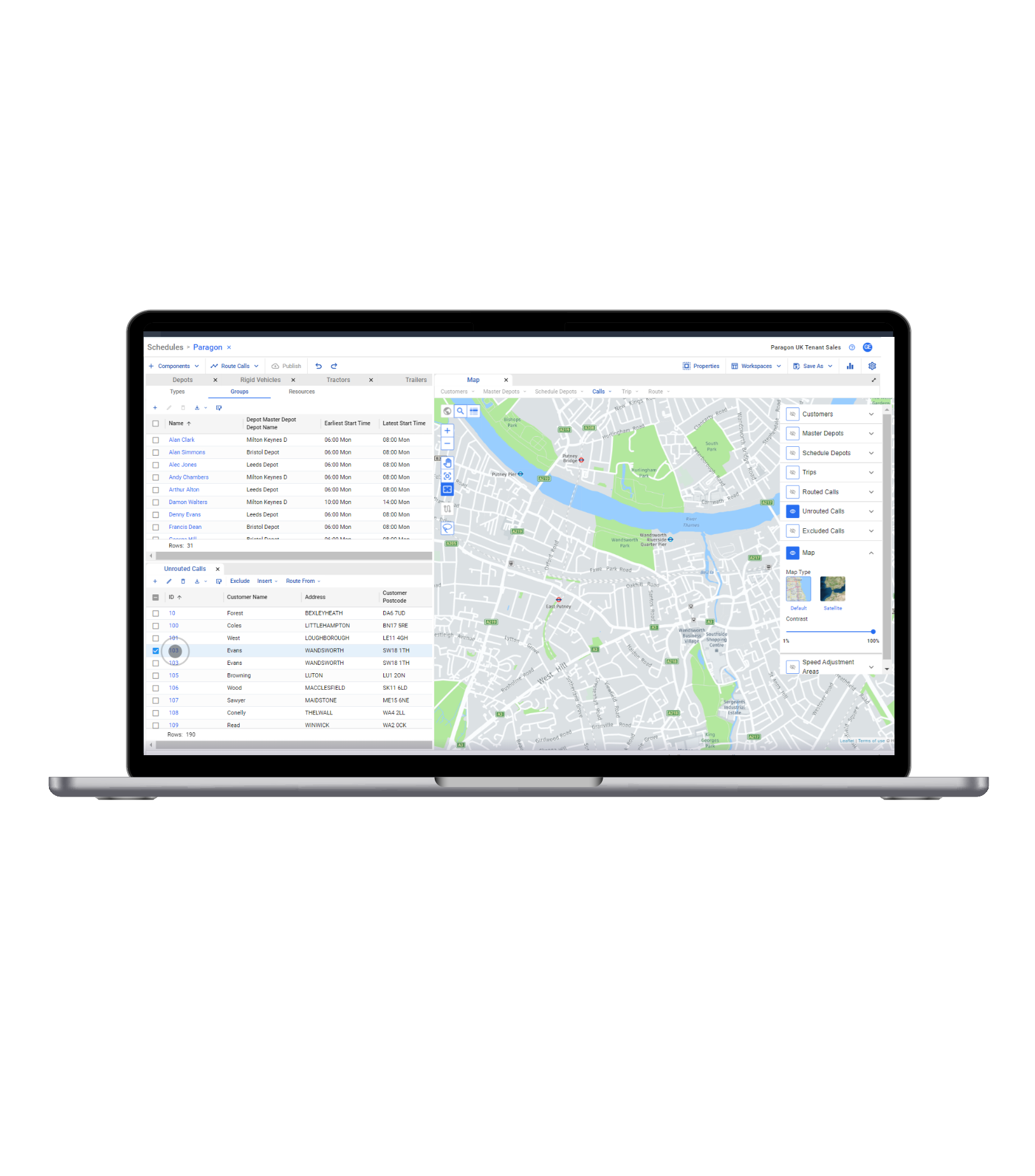How Drivers Can Help Improve Route Optimization
How Drivers Can Help Improve Route Optimization
How Drivers Can Help Improve Route Optimization
3 Mars 2021
 Jim Endres | Regional Account Director
Jim Endres | Regional Account Director
Most drivers already have exclusive access to valuable information about the specifics and peculiarities of routes and customer sites. This information has the potential to help fleet managers make better use of their drivers, and it enables drivers to actively contribute to route optimization. And yet, this knowledge often fails to get captured and incorporated into route plans.
A customer’s delivery may be delayed because of any number of things—a line of other (poorly scheduled) delivery vehicles, a congested road, or understaffing at the receiving dock. These factors, which your drivers experience first-hand, significantly impact the time it takes to complete delivery routes. Even small delays, aggregated over time, add up to late or missed deliveries further along the route.
It’s tempting to assume that technology will be a quick fix, and that implementing an advanced route planning system is all you need to ensure delivery routes are the best they can be. But, while route optimization software is extremely valuable and can do a lot for your business, driver feedback is an equally powerful tool.
In fact, the two go hand in hand—the right technology enables you to really use your drivers’ knowledge and experience, and your drivers’ knowledge helps you make the most of the technology.
That’s why it’s critical to implement and deploy your route optimization software in a way that captures the information that originates from the drivers so that their input is continually incorporated into your route optimization system.
Drivers need to trust the technology
Route optimization software does a great job of planning routes that minimize miles and make the best use of driver and vehicle resources. When you add in data from in-cab ELD/telematics or mobile electronic proof of delivery (ePOD) systems, you can compare how the actual routes are driven compared with the original route plan. To the extent that they differ, discussions with the driver can indicate whether there’s a need to change the plan, or for the driver to better adhere to route instructions.
But if your drivers aren’t willing to use the technology properly, let alone provide feedback, the best combination of ELD/telematics and software won’t help. In the past, there’s been evidence of driver resistance to ELD/telematics systems because they’re suspicious they’re being subjected to Big Brother surveillance. Training to ensure buy-in is an essential first step.
If you’re going to change the processes and technology office-based employees use to perform their jobs, it’s well recognized you need to deploy a change management process that seeks staff feedback on their needs and concerns. But when it comes to drivers, there’s too often a different management mentality. It’s easy to slip into an “us vs. them” culture and avoid seeking driver feedback for fear of hearing only complaints. Installing route optimization technology creates an opportunity to encourage them to feel like they’re part of the solution—that, in fact, they’re critical to the solution.
Management must encourage drivers to be part of the solution
Drivers need to know that their feedback is essential to achieving C-Suite business objectives through the use of route optimization software. They’re a critical part of the continuous improvement loop.
The secret to achieving that is a combination of incentives and disincentives—carrots and sticks. Carrots can come in the form of money, for example, offering a bonus to the top-performing driver of the month. Sticks might come in the form of a driver performance scorecard that shows who is performing poorly on service metrics like on-time performance and safety metrics like speeding or harsh braking, posted in the break room or other visible location.
Measuring and sharing key performance indicators (KPIs) is very important in all aspects of transportation management, and drivers are no exception. Each driver should have a scorecard. Whether you choose to display it publicly or not is entirely up to you and your team. Regardless, you should be communicating clearly and regularly with each driver to make them aware of how they’re doing regarding the transportation KPIs management have decided are important.
Keeping the feedback loop going
It really is all about the feedback loop.
One of the challenges distribution companies face is that there are typically two teams working on different aspects of the operation—one focuses on route planning, while the other manages driver dispatch schedules.
The routing team constructs routes the best they can, using known rules and parameters. But plans can fall apart during driver assignments if the dispatch team and drivers have existing knowledge of common routes that hasn’t been communicated to the planning team. Inclined to use their “real world” knowledge, they make changes on the fly that lead to less efficient routing in the end.
For example, a store may officially have delivery hours after 8:00 am, but the driver may know from experience that they can arrive at 7:00 am. That difference could mean including two extra stops close by or altering the route plan to reduce miles.
Or there could be an issue with multiple stops that appear to be conveniently located close to one another, but involve crossing and re-crossing a busy interstate. A more practical solution would be to make deliveries to all locations on one side of the highway first and then cross the interstate to make all deliveries on the opposite side. This is far less stressful for the driver, which is worth it even if it means adding in a little bit of extra time and distance.
In other words, you’ll get a superior outcome if you incorporate drivers’ insights, showing you trust your employees and what they have to say…. this also leads to happy drivers and thus less turnover.
Teamwork and collaboration get you there
A formalized and regular truck driver performance debrief process is critical. The debrief should be collaborative, not confrontational. It’s not an interrogation, it’s a conversation. You want to identify areas of variance from the plan that need to be incorporated in order to generate a better plan next time.
It really is a matter of communication. Successful operations have frequent driver meetings to reinforce the importance of route efficiency and solicit driver input. It sounds obvious, but it’s amazing how few companies actually do this.
With an emphasis on communication, you’re encouraging collaboration. You’re enabling your divers to share their input, to feel valued and validated. And, of course, to successfully execute the route plan.
It’s true—teamwork makes the dream work.
Ready to learn more about incorporating driver feedback into an advanced delivery route optimization system while improving your customer experience and saving 10-30% of your transportation costs? Contact Aptean to find out how.
Vous avez essayé la visite guidée du produit et vous êtes prêt à passer à la vitesse supérieure ?
Réservez dès aujourd'hui une démonstration complète avec notre équipe pour découvrir comment notre logiciel de routage avancé peut vous aider à accélérer vos performances.



